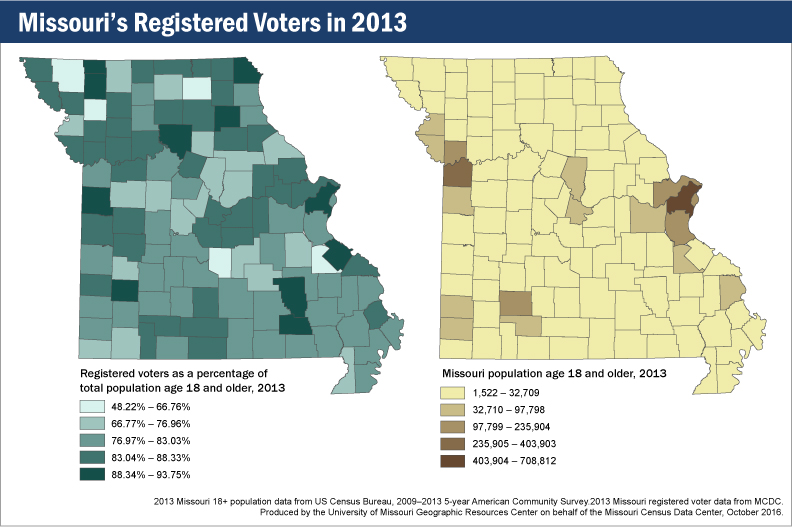For the upcoming November 8 Election Day, this month we present a view of registered voters in Missouri.

Looking at the map (left) of registered voters in 2013 as a percentage of total county population ages 18 and older, we see some interesting patterns. The areas around Kansas City and St. Louis represent two large blocks of registered voters, but that shouldn’t surprise anyone, because those places represent the two largest concentrations of people in the state. (The map on the right shows where Missourians aged 18 and older live.)
What about the rest of the state, though? Dade County stands out with a fairly high percentage of registered voters, but neither Boone nor Cole counties are in the top tier of voter registration. Then there are counties with lower total populations but higher registration rates: Carter, Chariton, Clark, Gentry, Reynolds, Shelby, Ste. Genevieve, and Worth are all in the highest tier of voter registration, despite not being highly populated.
What’s the point? In addition to the usual message of “every vote counts,” these two maps show that large populations do not necessarily translate to large voter populations. This will make for some interesting viewing once the returns start coming in on Election Day. Keep in mind, too, that this map of voter registration rates can be compared to a map of voter turnout to see whether these patterns remain the same. That’s a comparison for another month.




